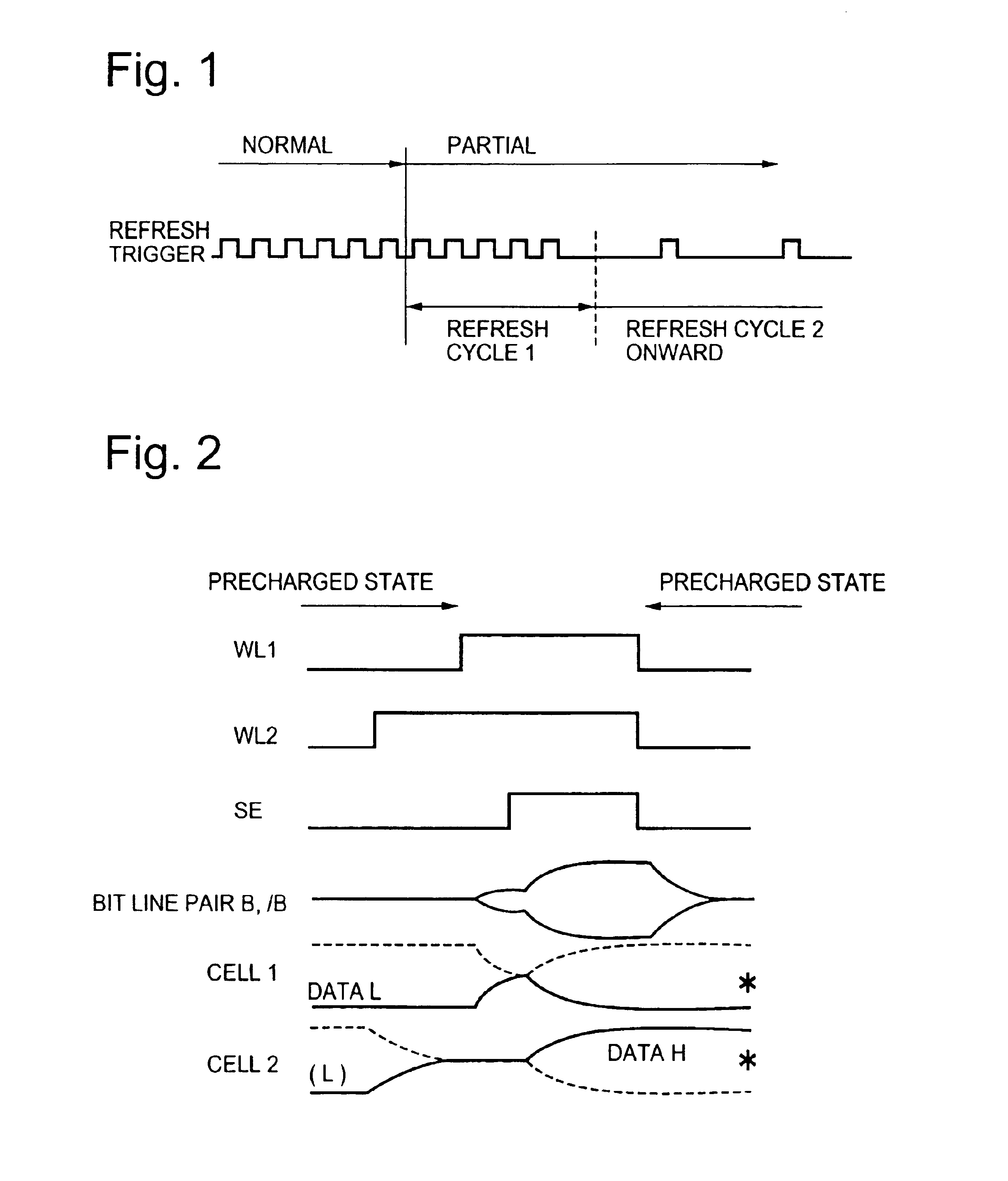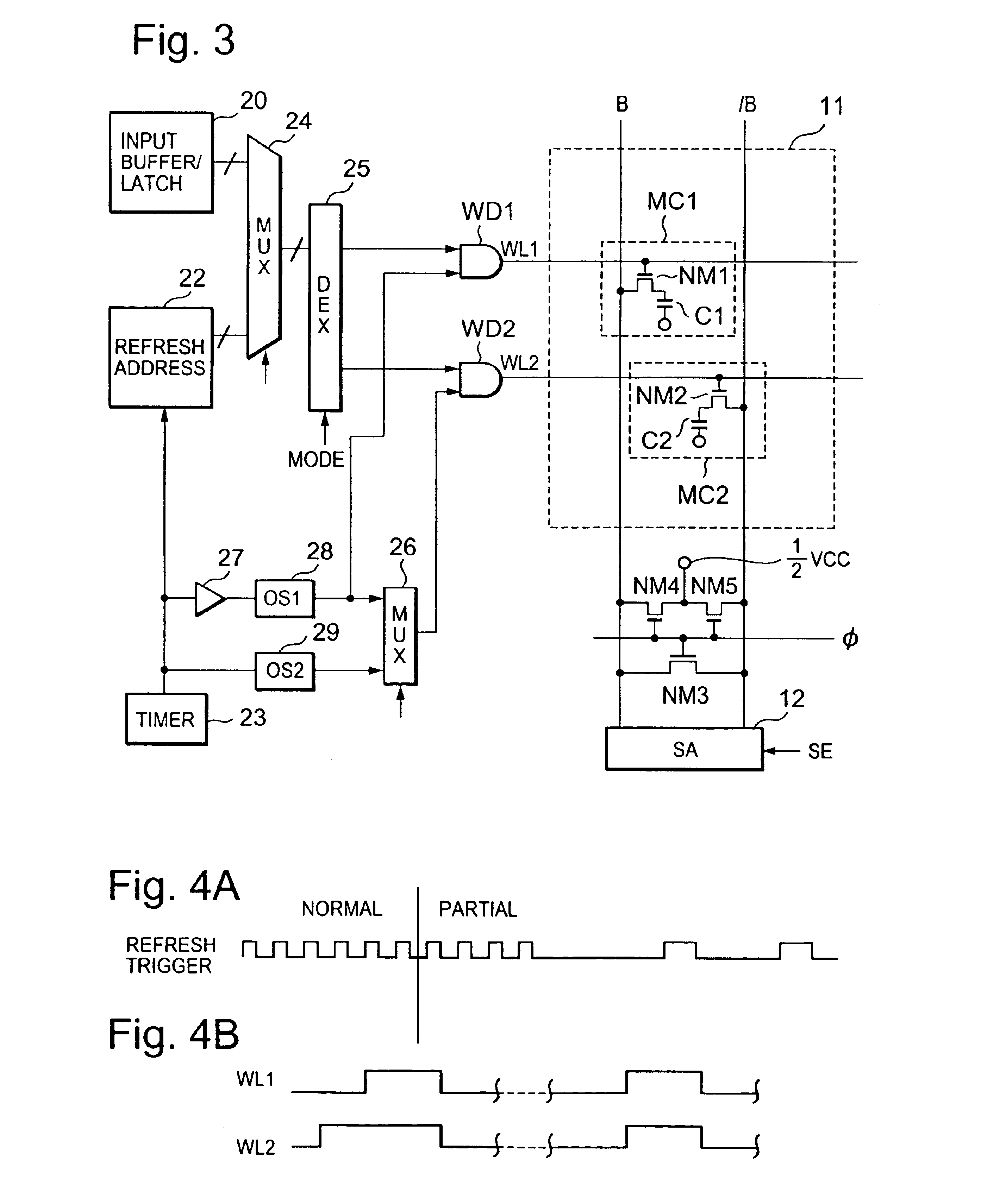Semiconductor memory device having mode storing one bit data in two memory cells and method of controlling same
a memory device and semiconductor technology, applied in information storage, static storage, digital storage, etc., can solve the problems of affecting normal access, affecting the normal operation of the device, and affecting the ability to refresh operations by continuous write operations, so as to suppress the increase in access time and reduce the duration of data copying.
- Summary
- Abstract
- Description
- Claims
- Application Information
AI Technical Summary
Benefits of technology
Problems solved by technology
Method used
Image
Examples
Embodiment Construction
[0042]Preferred embodiments of the present invention are described below. Referring to FIG. 3, in one preferred embodiment, a semiconductor memory device according to the present invention comprises: a cell array (11) having a plurality of memory cells, the cell array including at least; a bit line pair comprising first and second bit lines (B, / B) commonly connected to a sense amplifier (SA); a first memory cell (MC1) including a memory cell transistor (NM1), the gate of which is connected to a first word line (WL1) and one of the drain and source of which is connected to the first bit line (B), and a capacitor element (C1) connected to the other one of the drain and source of the memory cell transistor (MC1); and a second memory cell (MC2) including a memory cell transistor (NM2), the gate of which is connected to a second word line (WL2) and one of the drain and source of which is connected to the second bit line ( / B), and a capacitor element (C2) connected to the other one of th...
PUM
 Login to View More
Login to View More Abstract
Description
Claims
Application Information
 Login to View More
Login to View More - R&D
- Intellectual Property
- Life Sciences
- Materials
- Tech Scout
- Unparalleled Data Quality
- Higher Quality Content
- 60% Fewer Hallucinations
Browse by: Latest US Patents, China's latest patents, Technical Efficacy Thesaurus, Application Domain, Technology Topic, Popular Technical Reports.
© 2025 PatSnap. All rights reserved.Legal|Privacy policy|Modern Slavery Act Transparency Statement|Sitemap|About US| Contact US: help@patsnap.com



